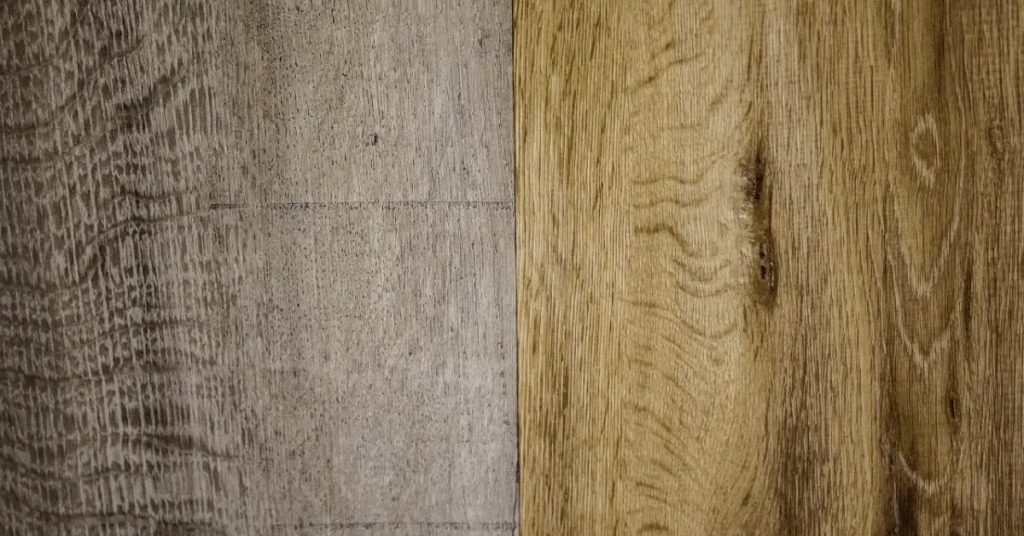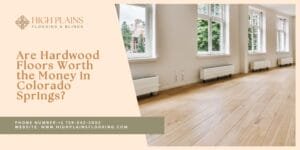When it comes to choosing the perfect flooring for your home, the decision often comes down to two popular choices: laminate flooring and luxury vinyl plank (LVP). Both materials offer a range of benefits, but understanding their differences can help you make a more informed decision that fits your style, budget, and functional needs.
In this blog post, we’ll compare laminate and LVP flooring, looking at factors like durability, cost, appearance, and maintenance. By the end, you’ll have a better idea of which flooring material is the best choice for your home.
Table of Contents
ToggleLaminate Flooring vs. LVP: Key Differences
Before diving into the specifics, let’s get an overview of each flooring type:
- Laminate Flooring: Laminate is made from compressed wood fibers with a photographic layer that mimics the look of real wood, tile, or stone. It’s a popular choice due to its cost-effectiveness and ease of installation.
- Luxury Vinyl Plank (LVP): LVP is made from multiple layers of vinyl, including a wear layer, a photographic layer, and a backing layer. LVP is known for being water-resistant and extremely durable, making it a go-to option for high-traffic and moisture-prone areas like kitchens and bathrooms.
Durability: Which Flooring Lasts Longer?

Laminate Flooring
Laminate flooring is highly durable but can be prone to scratching and dents over time, especially in high-traffic areas. It’s also more susceptible to water damage, making it less ideal for bathrooms, kitchens, or other moisture-heavy areas. However, laminate flooring is typically resistant to fading, so it will maintain its appearance for many years if properly cared for.

LVP Flooring
LVP is the more durable option when it comes to water resistance. Unlike laminate, LVP flooring is impervious to moisture, making it an excellent choice for bathrooms, kitchens, and basements. LVP is also more flexible and resistant to dents, scratches, and fading compared to laminate, making it a better option for homes with pets or high foot traffic.
Verdict:
If durability, especially in moisture-prone areas, is a top priority, LVP flooring would be the better option for your home.
Cost Comparison: Which Is More Budget-Friendly?
Laminate Flooring
One of the biggest advantages of laminate flooring is its affordability. Laminate tends to be much cheaper than LVP, with prices generally ranging from $1–$4 per square foot. If you're on a budget and looking for a flooring solution that mimics the look of wood or stone, laminate provides a cost-effective solution without compromising on appearance.
LVP Flooring
LVP tends to be more expensive than laminate, with costs typically ranging from $2-$7 per square foot. While it's still more affordable than hardwood or tile, LVP flooring can add up depending on the quality and brand you choose. However, it’s important to note that while LVP has a higher upfront cost, its durability and resistance to moisture might save you money on repairs and replacements in the long run.
Verdict
Laminate flooring is the more budget-friendly option for homeowners looking for an affordable solution, while LVP flooring offers better value over time due to its durability and water resistance.


Appearance: Which Flooring Looks More Realistic?
Laminate Flooring
Laminate has come a long way in terms of appearance. Thanks to advancements in printing technology, laminate can realistically mimic the look of wood, stone, or tile. However, laminate does tend to have a more artificial sheen compared to natural materials, and the surface is typically hard and cold to the touch. It doesn’t offer the same depth or texture as hardwood or stone flooring.
LVP Flooring
LVP has the edge when it comes to appearance. It can replicate the look of hardwood, stone, or tile with more texture and depth, and modern LVP designs include realistic wood grain patterns and embossed surfaces. Additionally, LVP flooring offers more variety when it comes to colors, finishes, and sizes. It’s easy to achieve the look of hardwood with LVP, while enjoying the benefits of enhanced durability and water resistance.
Verdict:
While laminate flooring offers good realism, LVP flooring provides a more authentic and high-end look with deeper textures, making it the better choice for homeowners seeking a realistic flooring option.
Maintenance: How Easy Is It to Maintain Laminate vs. LVP?
Laminate Flooring
Laminate is relatively easy to maintain. Regular sweeping or vacuuming will keep dirt and debris off the floor. You can also clean laminate floors with a damp mop, but you must avoid excessive water, as it can seep into the seams and cause damage. To prevent wear and tear, you may also want to use felt pads under furniture.
LVP Flooring
LVP is incredibly low maintenance. It’s water-resistant, so it’s perfect for wet areas like bathrooms and kitchens. You can clean LVP floors with a damp mop, and you won’t have to worry about water seeping into the seams. Unlike laminate, you don't have to worry about excessive moisture, which makes it easier to maintain in high-humidity environments.
Verdict
LVP flooring is easier to maintain, especially in areas where moisture is a concern. Laminate is low-maintenance but not as forgiving in wet environments.
Which Flooring Is Right for Your Home?
When deciding between laminate and LVP flooring, the right choice depends on your specific needs and budget. At High Plains Flooring and Blinds, we offer a wide selection of both options, ensuring you find the perfect fit for your home. Here are a few considerations to help you make your decision:
- Choose Laminate Flooring: If you’re on a budget and need a flooring option that mimics the look of hardwood, laminate is a great choice. It works well in dry areas like living rooms, dining rooms, and bedrooms.
- Choose LVP Flooring: If you need a more durable, water-resistant flooring solution for kitchens, bathrooms, or basements, LVP is the better choice. It’s also ideal for high-traffic areas or homes with pets.
Both options have their pros and cons, but ultimately it comes down to your style, functionality needs, and budget.






